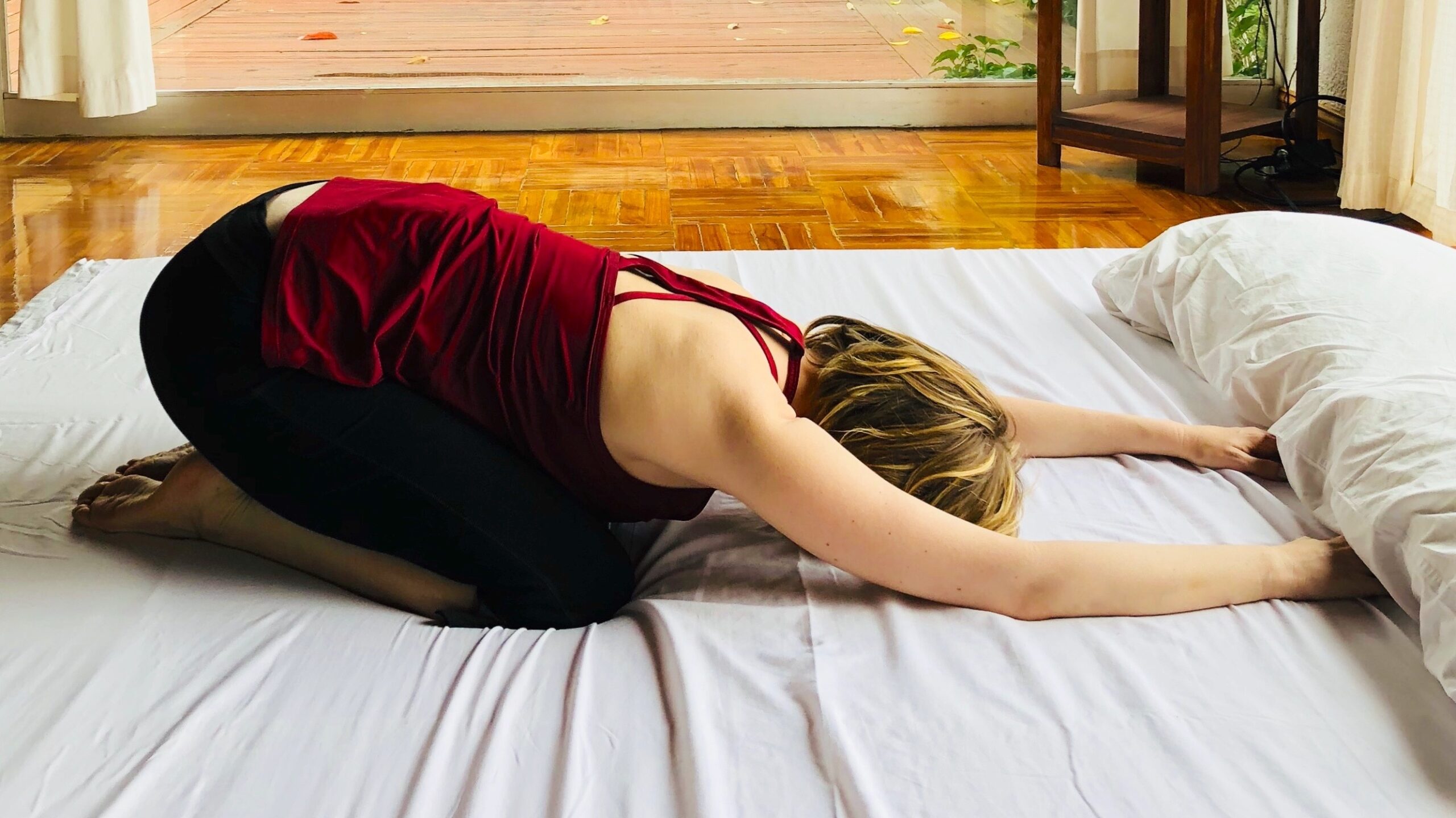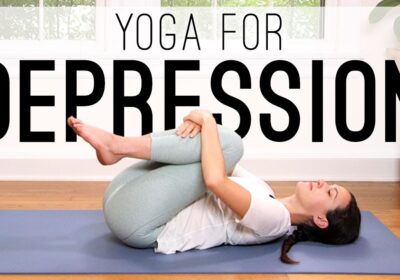Adverse Effects of Yoga

Summary:
- Yoga along with its benefits reportedly has some adverse effects especially when practiced wrongly. These side-effects of yoga are observed for asana, pranayama, meditation, as well as the yogic cleansing practices.
- People at the extreme of ages, and patients suffering from health related issues are more likely to have adverse events associated with yoga.
- Most risky practices are hand-stand, head-stand and shoulder stand followed by forward-backward bends.
Yoga is generally considered a safe and low-risk form of practice, but like any other intervention, there can be some potential adverse effects, particularly if the yoga practice is not performed correctly or if an individual has pre-existing health conditions. Yoga components like asana, pranayama, meditation, cleansing practices, all of them are known to be associated with certain adverse effects. We are further elaborating these adverse effects for individual components of yoga for the sake of clarity.
It is important to note that the risk of adverse effects from yoga can be minimized by working with a qualified and experienced yoga instructor, using proper alignment and modifications as needed, and listening to the body’s signals. It is also important to check with a healthcare provider before starting a yoga practice, particularly if an individual has pre-existing health conditions or concerns.
Adverse effects of yogasana
Asanas, or physical postures, are an important aspect of yoga practice. When practiced correctly, they can provide many physical and mental benefits, such as improved flexibility, strength, balance, and relaxation. However, if performed incorrectly or without proper guidance, asanas can also have adverse effects on the body and mind. Hand-stand, head-stand and shoulder-stand are three yoga practices with the most common adverse effects. These are followed by forward-backward bends and sitting postures. Here are some of the potential adverse effects of asana practices:
Musculoskeletal Strain or Injury: Certain yoga postures or movements can put stress on the muscles and joints, leading to strain or injury. This can be particularly common if an individual pushes themselves too hard, does not use proper alignment, or has pre-existing musculoskeletal conditions. Knee joints, neck and back are at particular risk for these types of injuries.
Fatigue or Overexertion: While yoga is generally considered a gentle form of exercise, some individuals may still experience fatigue or overexertion if they push themselves too hard or do not listen to their body’s signals. This is commonly observed after a session of power yoga or hot yoga.
Strain on the joints: Certain postures that involve weight-bearing on the joints, such as the knees, wrists, or shoulders, can cause strain on these joints, leading to pain or injury. For example: Hyperextension of knee joints has been observed in certain standing postures like padahastasana.
Headaches or Dizziness: Some individuals may experience headaches or dizziness during or after a yoga practice, particularly if the practice involves inversions or rapid changes in position. This can be due to changes in blood pressure or oxygen levels.
Muscle soreness: Asanas can cause muscle soreness, especially if you are new to yoga or are practicing an intense sequence. It is important to listen to your body and not push yourself too hard.
Nausea or Digestive Discomfort: Certain yoga postures or movements can put pressure on the abdomen or affect the digestive system, leading to nausea or other digestive discomfort.
Internal injuries: Going for extreme postures like chakrasana or dhanurasana without proper warm-up can result in internal injury and we have seen two cases of inguinal hernia after these practices among yoga trainers.
Increased anxiety: Some people may experience increased anxiety or nervousness when practicing certain postures that require balance or inversion. If you have a history of anxiety or panic attacks, it is important to consult with your healthcare provider before starting a yoga practice.
Cardiovascular issues: Certain types of intense yoga practices, such as power yoga or hot yoga, can raise heart rate and blood pressure, which may be problematic for people with certain heart conditions. Practitioners in power yoga and hot yoga sometimes go to an extent where the practice becomes almost non-yogic.
Aggravation of certain medical conditions: Certain medical conditions, such as high blood pressure, glaucoma, or herniated discs, may be aggravated by certain asanas. It is important to consult with your healthcare provider before starting a yoga practice, especially if you have any pre-existing medical conditions.
Adverse effects of pranayama
Pranayama, or breath control, is an important aspect of yoga practice. When practiced correctly, it can provide many physical and mental benefits, such as reduced stress and anxiety, improved lung function, and increased energy. However, if performed incorrectly or without proper guidance, pranayama can also have adverse effects on the body and mind. Here are some of the potential adverse effects of pranayama:
Hyperventilation: Practicing pranayama too quickly or forcefully can lead to hyperventilation, which can cause dizziness, lightheadedness, or even fainting. It is important to practice pranayama under the guidance of a qualified yoga teacher, especially if you are new to pranayama or have any pre-existing medical conditions.
Headaches or Dizziness: Headache is probably the commonest adverse effect associated with yoga practice and has also been highlighted in hatha yoga texts in relation with pranayama practice. Some individuals may experience headaches or dizziness during or after a pranayama practice, particularly if the practice has been performed with unnecessary strain.
Breath retention (Kumbhaka): Certain pranayama techniques involve breath retention (kumbhaka), which can be dangerous if practiced incorrectly or if you have certain medical conditions, such as high blood pressure, heart disease, respiratory issues, seizure disorder etc. Hence, kumbhaka is generally not taught as a part of therapy.
Aggravation of certain medical conditions: Certain medical conditions, such as asthma or chronic obstructive pulmonary disease (COPD), may be aggravated by certain pranayama techniques. There is a reported case of pneumothorax after an intense practice of kapalabhati. Besides, the effects of the majority of pranayama on cardiac rhythm can also be significant.
Increased anxiety: Breath is supposed to have a direct connection with the mind as per yogic understanding. Any irregularity/imbalance in breathing will also have an impact on our mind. People experience increased anxiety or nervousness when practicing certain pranayama techniques, such as rapid breathing or breath retention.
Adverse effects of meditation
Meditation is a practice that involves training the mind to focus on the present moment and cultivate a sense of calm and relaxation. When practiced correctly, it can provide many physical and mental benefits, such as reduced stress and anxiety, improved emotional regulation, and increased focus and attention. However, if practiced incorrectly or without proper guidance, meditation can also have adverse effects on the body and mind. Here are some of the potential adverse effects of meditation:
Episode of psychosis: There are reported cases of psychosis among prone people after meditation. These cases are generally after long meditation retreats. Hence, meditative practices are contraindicated among patients with psychosis or individuals prone to psychosis.
Increased anxiety: Some people may experience increased anxiety or nervousness when meditating, especially if they are new to the practice or are dealing with underlying mental health conditions. If you have a history of anxiety or panic attacks, it is important to consult with your healthcare provider before starting a meditation practice.
Distracting thoughts: While meditation is designed to help quiet the mind, some people may find that their thoughts become more distracting or overwhelming when they try to meditate.
Frustration or disappointment: If you have unrealistic expectations about what meditation can do for you, you may feel frustrated or disappointed when you do not experience immediate or dramatic results. Meditation is to be approached with an open mind and a non-judgmental attitude, and it is important to recognize that progress may come gradually over time.
Disconnection from reality: In rare cases, people may experience feelings of disconnection or dissociation when meditating, which can be distressing. If you experience any such symptoms during meditation, it is important to stop the practice and seek guidance from a qualified healthcare professional.
Physical discomfort: If you are sitting or standing in one position for a prolonged period of time during meditation, you may experience physical discomfort, such as back pain or stiffness.
Sleep disturbances: Some people may experience sleep disturbances or insomnia when practicing meditation, especially if they practice close to bedtime.
Poor productivity: Some people report that they don’t feel the stress after meditation practice. And they are able to postpone their routine activities without getting stressed about it. This results in poor productivity and is an indirect adverse effect of meditation practice.
Adverse effects of kriyas (Yogic cleansing practices)
Kriyas, or yogic cleansing techniques, are a set of practices aimed at purifying the body and mind. These techniques are believed to clear out toxins and negative energy, improve digestion, and boost overall health and well-being. Here are some of the potential adverse effects of kriyas:
Dehydration & Electrolyte imbalance: Certain kriyas, such as neti and kunjal, involve the use of water or salt water to cleanse the nasal passages or the stomach. If practiced excessively or incorrectly, these kriyas can lead to dehydration, electrolyte imbalances, or irritation of the nasal or digestive tract. These complications are more commonly observed for patients with chronic kidney disease.
Infections: If the equipment or materials used in kriyas, such as neti pots or sutra for sutra neti etc., are not properly sterilized or cleaned, they can lead to infections, such as sinus infections or gastrointestinal infections.
Aggravation of certain medical conditions: Certain medical conditions, such as high blood pressure, cardiac issues, chronic kidney disease, or digestive disorders, may be aggravated by certain kriyas. All these health issues may get worsened with the laghu shankha prakshalana.
Stress & anxiety: Undergoing the practice of kriya can sometimes be very stressful and result in anxiety episodes. In our experience we have seen patients getting anxious just by observing others performing sutra neti or vamana dhauti. It is mandatory to explain the procedure in detail along with demonstration.
Physical discomfort: Certain kriyas, such as shankhaprakshalana or laghu shankhaprakshalana, involve drinking large amounts of salt water and performing a series of yoga postures to stimulate bowel movements. These practices can be uncomfortable or distressing, especially for individuals with a history of gastrointestinal disorders. Similarly, the majority of kriyas (especially sutra neti, vamana dhauti and vastra dhauti) are associated with physical distress which is generally beyond the imagination of a common man.
Nausea or vomiting: Some kriyas, such as laghu shankha prakshalana or fasting, can lead to nausea or vomiting if not performed correctly or without proper guidance.
Irritation or injury: Some kriyas, such as nasal irrigation or eye washing, can lead to irritation or injury if not performed correctly or without proper guidance.
Adverse effects of mantra chanting
Mantra chanting is a practice in yoga that involves the repetition of a specific sound, word, or phrase, often for spiritual or meditative purposes. When practiced correctly, mantra chanting can provide many physical and mental benefits, such as reducing stress, promoting relaxation, and enhancing focus and concentration. However, if performed incorrectly or without proper guidance, mantra chanting can also have adverse effects on the body and mind. Here are some of the potential adverse effects of mantra chanting:
Headache or dizziness: Chanting mantras can sometimes lead to headache or dizziness, especially if performed with incorrect breathing techniques or without proper guidance or loudly.
Overstimulation: Chanting a mantra for an extended period of time can overstimulate the mind and nervous system, leading to restlessness, anxiety, or insomnia. It is important to start with short chanting sessions and gradually increase the duration and frequency of your practice over time.
Discomfort or pain: Chanting a mantra for an extended period of time can also lead to discomfort or pain in the throat, jaw, or tongue. It is important to practice mantra chanting with proper posture and alignment, and to take breaks or modify your practice if you experience discomfort or pain.
Vocal strain: Chanting mantras can lead to vocal strain or fatigue if not performed correctly or without proper guidance. It is important to warm up your voice before chanting, and to avoid straining your voice or chanting too loudly.
Cultural appropriation: Mantra chanting is a practice deeply rooted in Indian culture and spirituality. It is important to approach this practice with respect and awareness, and to avoid appropriating or misusing the traditions and beliefs of other cultures.
Confusion: If a mantra is chanted without understanding its meaning or context, it can lead to confusion or misinterpretation. Though chanting can be taken up without understanding the meaning of the mantra, it is of additional benefit to learn the meaning.
It is important to approach yoga with mindfulness, awareness, and proper guidance, and to listen to your body and mind during your practice. By practicing with intention and respect, you can minimize the risk of adverse effects and maximize the benefits of your yoga practice.
Related Posts

Yoga for Anxiety Disorders
Summary: Yoga can be used as both an add-on treatment and as a monotherapy for…

Yoga for Back pain
Summary: Yoga can be used as both an add-on treatment and as a monotherapy for…

Yoga for Depression
Summary: Yoga can be used as both an add-on treatment and as a monotherapy for…

Leave a Reply